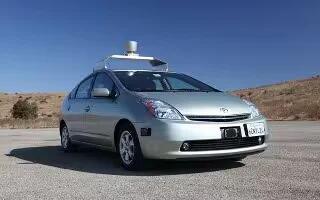Introduction
Now a days the road accidents are increasing. The losses suffered are more. We are losing mighty humans, leaders, etc., the main reason for accidents are reckless driving by drivers. In order to avoid these accidents we have designed a model car, which will run according to predefined informations.
This project can be operated by any user known language. The parallel ports of pc are used to control the car. In future this can be extended to stop car by the police using the registration provided. Various direction turnings can be achieved. This uses frequency division multiplexing technique, to transmit the signal. This is one of the wireless communications. This is one of the gateway to BLUE TOOTH. The relays are used to control various directions. By connecting an obstacle detector the accidents can be avoided.
Block Diagram

The computer generates the control signals and it is given to the interfacing circuit. According to the computer generated signals ,the interfacing circuit activates the relay. This signal will be frequency multiplexed then transmitted through the antenna.
At the receiving end ,the receiver antenna receives the R.F signals, this will be demultiplexed and given to the motors. Thus according to pc signals the motor rotates.
Circuit Diagram

The interfacing circuit uses opto coupler it is the combination of LED and a photo diode. Whenever the LED of photodiode receives a +5vfrom the pc,the LED glows, this light will fall on the photo diode, this diode generates a voltage this is given to the base if the transistor. According to the inputs from the pc the opto coupler generates voltage. Here this is only light transfer; hence there is feedback to the computer. Transistor will activates the relay.
The relay output is given to the frequency division multiplexing circuit. The various signals are transmitted at varying frequency but through the same channel. At the receiving side, the demultiplexing circuit will separate the signals. and this signals activates the car motors.
Software
This project invokes user friendly c language or basic. on running the c program the various directions are to be fed through the key board.some key combinations are as follows.
- A for left
- D for right
- X for back
- W for forward
- S for stop
The above keys are used to control the car.
Further this can be programmed, to activate the car to travel a certain distance and then to stop. The circular motion can be achieved. This can be controlled by Internet. This is used to catch the traffic rules violator. To implement this every car should have separate IP address like the registration number
If any one violates, the traffic police can log on the internet and stop the vehicle at that place itself. For the high commanding officials we can use a separate R.F signal, which cannot be interfered by other, so a safe transport can be achieved.
In the basic program a user screen will be displayed, from this screen we can control the car.
Parallel Port
The parallel port or line printer terminal (LPT) port is a 25-pin D-type female connector available at the back of PC. A basic IBM PC usually comes with one or two LPT ports. The original parallel port, called standard parallel port (SPP), is a bundle of three ports (or registers), namely, data port, status port, and control port. Pins 2 through 9 form the 8-bit data port. This port is purely a write-only port. This means it can be used only to output some data through it. Pins 1, 14, 16, and 17 form the control port, which is capable of reading/writing. Pins 10 through 13 and pin 15 together form the status port. The status port is a read-only port. The details of 25-pin parallel port are given in Table I.
Table I
| Parallel Port Pin Number | Port Signal Name | Direction | Hardware Inverted | Register |
| 1 | Nstrobe | I/O | Yes | Control |
| 2 | D0 | Out | Data | |
| 3 | D1 | Out | Data | |
| 4 | D2 | Out | Data | |
| 5 | D3 | Out | Data | |
| 6 | D4 | Out | Data | |
| 7 | D5 | Out | Data | |
| 8 | D6 | Out | Data | |
| 9 | D7 | Out | Data | |
| 10 | NACK | In | Status | |
| 11 | Busy | In | Yes | Status |
| 12 | PaperOut | In | Status | |
| 13 | Select | In | Status | |
| 14 | Nauto-Lf | I/O | Yes | Control |
| 15 | Nerror | In | Status | |
| 16 | Ninitialize | I/O | Control | |
| 17 | Nselect | I/O | Yes | Control |
| 18 – 25 | Ground | Gnd |
The base address of the first parallel port (LPT1) is 0378 in hexadecimal (hex) notation (or 888 in decimal notation). The base address of the second parallel port (LPT2) is 0278 in hex. In this project, weve used only LPT1.
Advantages
- Accidents can be controlled
- Driverless transport is possible
- More flexible
- More reliable
- Easily controlled
- Can be controlled though internet
- Safe transport
- Programmed in any language
Conclusion
Thus the accidents can be efficiently controlled.thus we can move accident free world with the help of e-tronics.
